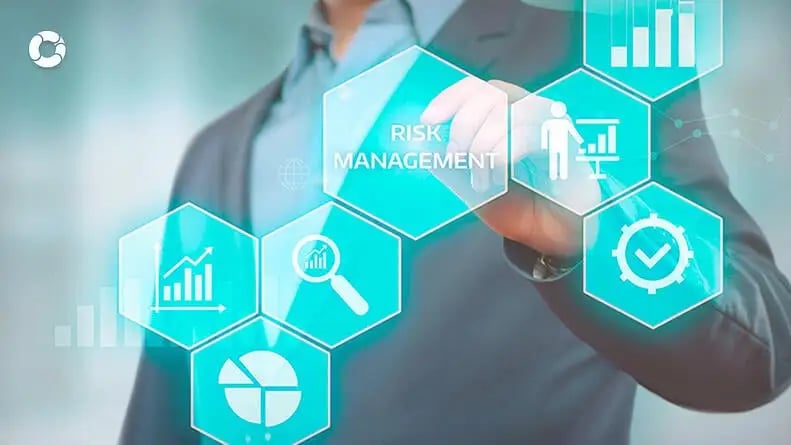The Importance and Importance of Risk Management in Ensuring Business Continuity
The Importance and Importance of Risk Management in Ensuring Business Continuity
Blog Article
Exploring the Relevance of Risk Management for Effective Decision-Making Methods
In the detailed globe of organization, Risk Management arises as an important consider the decision-making process. The ability to recognize possible risks and possibilities, and strategize appropriately, can lead to the difference between success and failing. With devices such as SWOT and PESTEL, organizations are furnished to make enlightened choices, promoting strength and adaptability in an ever-changing environment. Wondering just how this works? Let's unbox the characteristics even more.
Understanding the Concept of Risk Management
Risk Management, a crucial component in decision-making, is usually misinterpreted or oversimplified. Risk Management includes self-displined and structured methods, utilizing information and insightful analyses. From economic uncertainties, lawful responsibilities, critical Management mistakes, to mishaps and all-natural disasters, it attends to various dangers - importance of risk management.
The Role of Risk Management in Decision-Making Processes
In the world of tactical preparation and business operations, Risk Management plays an essential duty in decision-making processes. It helps in identifying potential threats and unpredictabilities that could influence the achievement of business purposes. By tracing these dangers, companies can formulate methods to minimize their impact, guaranteeing service connection and security. Risk Management thus ends up being an essential tool in decision-making, helping leaders to make informed options based upon a comprehensive understanding of the risks involved. It motivates a positive technique, making it possible for organizations to anticipate and prepare for possible future scenarios. This dramatically reduces the chance of unfavorable effects, promoting a lot more effective and reliable decision-making approaches. Risk Management serves as an essential part in the decision-making procedures of any organization.

Just How Risk Management Enhances Strategic Preparation
In the context of critical preparation, Risk Management plays an essential role. Initiating with the recognition of prospective risks, it better includes the application of Risk reduction procedures. The role of Risk Management is not static yet vibrant, as it requires continuous surveillance and adjusting of approaches.
Recognizing Possible Threats
Executing Risk Mitigation
Having developed the value of recognizing possible threats, the following action is to discover Risk reduction. This process includes establishing and carrying out methods to manage recognized threats efficiently. It is a vital aspect of calculated preparation as it enhances decision-making by minimizing possible unfavorable end results. Risk mitigation strategies can vary from Risk evasion, Risk transfer, to risk decrease. Each approach must be customized to the particular Risk, considering its possible influence and the company's Risk resistance. Furthermore, reliable Risk mitigation needs a deep understanding of the Risk landscape and the possible effect of each Risk. This understanding makes it possible for companies to focus on threats and assign resources successfully, making certain that the most significant threats are resolved first.
Surveillance and Changing Strategies
Though Risk mitigation is a vital action in strategic preparation, continual surveillance and change of these methods is just as crucial. It likewise offers an opportunity to evaluate the success of the Risk Management procedures, enabling adjustments to discover this info here be made where necessary, more boosting calculated planning. Monitoring and readjusting Risk Management strategies is a crucial component for improving a company's durability and calculated preparation.
Instance Studies: Successful Risk Management and Decision-Making
In the world of company and financing, effective Risk Management and decision-making usually act as the pillars of prosperous ventures. One such entity is an international oil firm that minimized financial loss by hedging against fluctuating oil prices. In one more circumstances, a technology startup prospered by recognizing and approving risky, high-reward approaches in an unpredictable market. A global bank, confronted with governing unpredictabilities, efficiently browsed the circumstance via proactive Risk evaluation and dynamic decision-making. These cases highlight the worth of sharp Risk Management in decision-making procedures. It is not the lack of Risk, but the Management of it, that often separates successful business from not successful ones. These cases underscore the critical role of Risk Management in critical decision-making. importance of risk management.
Tools and Methods for Reliable Risk Management
These devices, such as Risk signs up and this website warmth maps, aid in identifying and examining possible threats. Risk action strategies, an essential element of Risk Management, include approving, staying clear of, moving, or mitigating risks. With these tools and methods, decision-makers can navigate the complicated landscape of Risk Management, thus helping with informed and effective decision-making.
Future Trends in Risk Management and Decision-Making Methods
As we discover the substantial landscape of Risk Management, it ends up being obvious that the methods and tools used today will continue to progress. Future trends aim in the direction of an enhanced reliance on technology, with expert system and device learning playing significant duties. These modern technologies will certainly allow organizations to anticipate potential risks with better precision and make more educated choices. In addition, there will certainly be a growing emphasis on resilience, not just in handling dangers but likewise in jumping back from unfavorable scenarios. Finally, the principle of Risk culture, where every member of a company is conscious and associated with Risk Management, will gain a lot more prominence. These patterns proclaim a more aggressive and inclusive method in the direction of Risk Management and decision-making.
Verdict

Risk Management thus comes to be an essential tool in decision-making, assisting leaders to make enlightened selections based on a comprehensive understanding of the dangers entailed. Risk mitigation methods can vary from Risk evasion, Risk transfer, to take the chance of reduction (importance of risk management). Effective Risk reduction requires a deep understanding of the Risk landscape and the potential impact of each Risk. Risk action techniques, an essential part of Risk Management, include approving, preventing, transferring, or mitigating dangers. The idea of Risk culture, where every member of an organization is aware and included in Risk Management, will certainly get much more prominence
Report this page